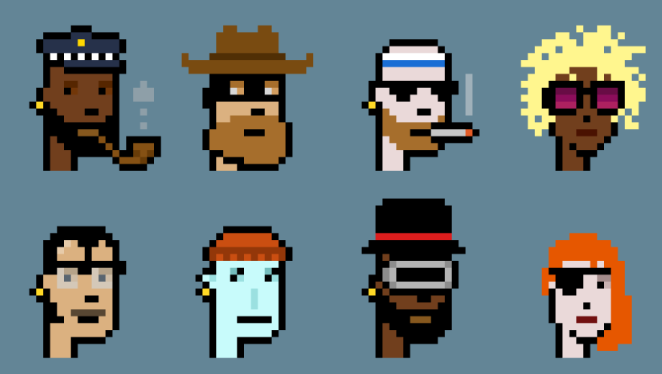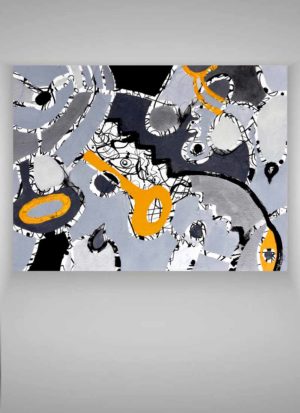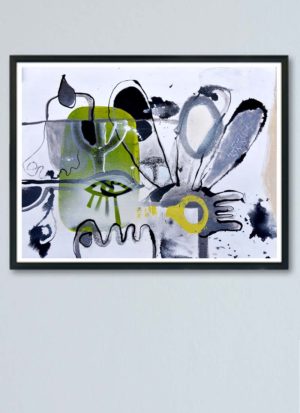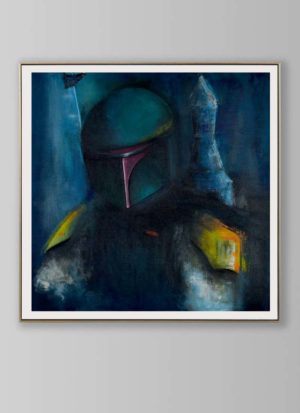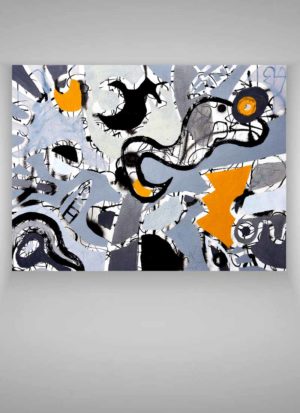Before March 11th had you heard of an artist called Beeple? We hadn’t. But for Mark Winkelmann aka Beeple, March 11th became a pretty significant date. It was the day a piece of his digital art (aka an NFT) sold at Christie’s for a whopping $69 MILLION.
A bit like Beeple, before that date we hadn’t heard of NFT’s either but since then the term has continuously popped up on our social feeds, with some pro NFTs and some against.
So, today we thought we’d take a look at what exactly NFT’s are and try and figure out if this is just some over hyped bubble or the start of something big.
We’ll be honest, right now we feel like the old person who is being taught how to use an Ipad for the first time (in fact do people still use Ipads or was that an old person analogy?).
It’s a world of terminology that we don’t fully understand so in order to try and make sense of it all we thought we’d start at the beginning and work our way through it…
Let’s go back, way back… back to the early eighties
NFT’s are part of a world known as Cryptocurrency which, put simply, is a digital version of the money most people are familiar with, except it doesn’t physically exist. It can be used to buy things, it can be bought with your traditional money (also known as fiat currency) and the value of it can go up or down, but the key factor is, unlike your ‘normal’ money it is not controlled by the Government. It is known as a decentralised currency.

between the two forms of currency
The idea of Cryptocurrency goes back to the early eighties when, according to Moneycrashers.com, a chap called David Chaum created a secure and highly complex algorithm that allowed parties to send digital transfers to each other. This idea paved the way for us to send money digitally, ie online banking and Paypal.
The concept, although still in its infancy was developed further with new companies appearing such as Bit Gold and e-gold creating decentralised digital currencies but the concept was still too far-fetched at this point to gain any real traction.
It was only in 2009 when an unknown person or group calling themselves Satoshi Nakamoto launched Bitcoin, that things really began to happen. If you’re unfamiliar with the Cryptocurrency world, as we were, it’s likely you’ve at least heard of Bitcoin (there are others such as Ethereum) but as Bitcoin seems to be the most popular we’re going to use it as our example).
Bitcoin is the number one form of Cryptocurrency in the world. It’s become so popular that you can now purchase from Microsoft, donate to the RNLI, buy a pint, purchase from vendors on Etsy, go to a concert, pay your rent, buy groceries or even book your spot on Virgins Galactic commercial spaceflight… all using Bitcoin.
Now obviously, not ALL retailers are adopting this new form of payment… yet. And that’s the key here… it seems like it could only be a matter of time. Bitcoin has seen incredible highs (and lows) as more join the Cryptocurrency revolution.

In recent months the currency has gained quite a lot of media attention with the price of Bitcoin rising sharply. In fact if you wanted to buy one Bitcoin today it would cost you just over £40,000 but like all commodities, you don’t have to buy a whole one. You can buy whatever you can afford, or afford to lose, because no one can guarantee the price and popularity of digital currencies like Bitcoin will continue to go up or come crashing down.
At this point we could start going further down the rabbit hole and discuss blockchains, mining, private keys, keyless wallets, the pros and cons of Cryptocurrency etc but a simple google search will provide you with a wealth of information. (One insightful article we would recommend by Jacqueline Choe looks into the myths and accusations surrounding cryptocurrency and NFTs.)
As the title of this article states. what we really want to discuss is NFTs.
Although NFT’s date back to around 2012, it’s the recent auction of Beeple’s NFT artwork for $69m that has sparked a lot of interest and got people asking…
What exactly is a Non Fungible Token (NFT)?
In simple terms (and we like simple) an NFT is a digital token that proves ownership over a digital file. In Beeple’s case it was a digital image but an NFT could also prove ownership of a piece of music, virtual trading cards, a 3D model, video footage… pretty much anything digital or virtual.
According to an article on the history of NFTs by Andrew Steinwold, the history stretches back to 2012/13. Since then cats, frogs, memes, trading cards and punks have all been turned into NFTs.
When you purchase an NFT (which at the moment is mainly done using Ethereum rather than Bitcoin) what you are essentially getting is a digital proof of purchase or certificate which can then be sold on at a later date. The purchase history is recorded in digital ledgers known as blockchains (sorry we know we said we weren’t going down that rabbit hole) and because they are purchased using cryptocurrency there is a detailed transaction record for every activity.
There are a number of platforms where NFTs are created (also known as ‘minted’), bought and sold such as Rarible, Zora and Mintable but if the popularity of the format continues to grow, we’re pretty sure more will begin to appear… but the big question is…
Is the NFT here to stay or is this simply an over hyped bubble?
The short answer is ‘only time will tell’. But here’s our slightly longer answer…
Right now NFTs are trendy, they’ve been thrown into the spotlight simply because of the large sums of money involved. Over time, we believe, things will level out, the technology will continue to improve and become a widely accepted art form in its own right. One well known artist who is about to dip his toe into the world of NFTs is Logan Hicks.
On his Facebook page he discussed his thoughts surrounding this hot topic, “ In a way I sort of hate the fact that so much money has been made so quickly from them (NFTs), because it distracts from the potential of this new medium. For obvious reasons the only thing that people seem to be talking about is the money. Every day I get a text or email from someone saying ‘did you see how much XXX made”?
For me, I’m looking forward to exploring the medium and finding a new way to showcase the work that I do. I just think of it as a new platform to speak from. I think it will be great to explore the layers and the complexity of the stencils, or the emotions that the photos I take elicit. It’s exciting.
The fact that the potential for income is larger than most traditional galleries is great, and I am excited about crypto transactions, but at the root of it, if the art sucks everything else is irrelevant”.
Like all things new and different, there’s the ‘this is just a fad, it won’t last’ camp and then there’s the ‘let’s push this, it’s exciting… it’s the future’ camp. Even Beeple believes that NFTs are in Bubble and that it will eventually burst… but bursting doesn’t mean disappearing.
A quick Google search reveals a mind boggling array of opinions and trying to form your own feels like wading through mud. Whilst the exhausting debate ensues, more artists are making the decision to get involved, including Leicester based artist Tim J Fowler who recently had his first NFT virtual exhibition through Decentraland.com…

…and Charles Uzzell Edwards better known as Pure Evil has begun ‘minting’ his own NFTs through Rarible and Foundation…
…and on twitter American Artist and Designer Greg Mike, shared his recent NFT venture demonstrating the possibilities of how virtual/digital exhibitions could be done:
A world of possibilities…
We aren’t going to pretend that we know all the ins and outs about NFTs, for us it’s a whole new world, a world full of hidden potential. When you mix creative, artistic minds with new technology you know it’s going to open a world of possibilities.
There’s no denying we are moving more and more into a digital world so why wouldn’t people start collecting things ‘virtually’; it’s been happening in computer games for years where gamers are buying skins for characters, more weapons etc so surely NFTs aren’t that far removed?
For us the arguments seem similar to the idea of a vinyl record collector versus someone who has their collection stored digitally – who’s collection is more valid?
For artists it could certainly be another interesting revenue stream outside of the traditional gallery route, ultimately resulting in further control and creative freedom – and that’s what makes it exciting.




